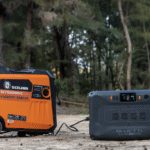Make Your Home a Green Oasis: Energy-Efficient Living
The Benefits of Energy-Efficient Living
As the world grapples with the challenges of climate change, energy efficiency has become a crucial aspect of our daily lives. By adopting energy-efficient practices, we can significantly reduce our carbon footprint, lower our energy bills, and create a healthier and more sustainable living environment. In this article, we’ll explore the benefits of energy-efficient living and provide practical tips on how to make your home a green oasis.
Understanding Energy Efficiency
Energy efficiency refers to the use of technology and design to reduce energy consumption while maintaining or improving the performance of a building or home. This can be achieved through various means, including:
- Using energy-efficient appliances and lighting
- Improving insulation and air sealing
- Installing solar panels and wind turbines
- Implementing smart home technology
The Environmental Impact of Energy Efficiency
Energy efficiency has a significant impact on the environment. By reducing energy consumption, we can:
- Lower greenhouse gas emissions and slow down climate change
- Conserve natural resources and reduce waste
- Protect biodiversity and ecosystems
- Improve air and water quality
Cost Savings and Energy Efficiency
Energy efficiency not only benefits the environment, but it also saves homeowners money on their energy bills. According to the U.S. Department of Energy, energy-efficient homes can save up to 30% on energy bills. Additionally, energy-efficient appliances and lighting can last longer and require less maintenance, further reducing costs.
Practical Tips for Energy-Efficient Living
Implementing energy-efficient practices in your home is easier than you think. Here are some practical tips to get you started:
- Turn off lights, appliances, and electronics when not in use
- Use energy-efficient light bulbs and appliances
- Seal air leaks and improve insulation
- Use a programmable thermostat to regulate temperature
- Install a smart power strip to eliminate standby power consumption
Conclusion
Making your home a green oasis is a simple and effective way to reduce your carbon footprint, lower your energy bills, and create a healthier living environment. By understanding the benefits of energy efficiency, implementing practical tips, and staying informed about the latest technologies and innovations, you can make a significant impact on the environment and enjoy a more sustainable lifestyle.
FAQs
Q: What is the most effective way to reduce energy consumption in my home?
A: The most effective way to reduce energy consumption in your home is to implement a combination of energy-efficient practices, including using energy-efficient appliances and lighting, sealing air leaks, and improving insulation.
Q: How can I determine if my home is energy-efficient?
A: You can determine if your home is energy-efficient by conducting an energy audit, which involves inspecting your home’s energy-using systems and identifying areas for improvement. You can also consult with a professional energy auditor or a local utility company for assistance.
Q: What are some common myths about energy efficiency?
A: Some common myths about energy efficiency include:
- Energy-efficient homes are expensive to build
- Energy-efficient appliances are less effective
- Energy efficiency is only important for large-scale commercial buildings
A: These myths are not true. Energy-efficient homes can be designed and built to be affordable, energy-efficient appliances are just as effective as traditional appliances, and energy efficiency is important for all types of buildings, regardless of size.
Q: How can I get started with energy-efficient living?
A: You can get started with energy-efficient living by implementing simple changes in your daily routine, such as turning off lights and appliances when not in use, and using energy-efficient appliances and lighting. You can also consult with a professional energy auditor or a local utility company for guidance and support.




_2.png?w=150&resize=150,150&ssl=1)


